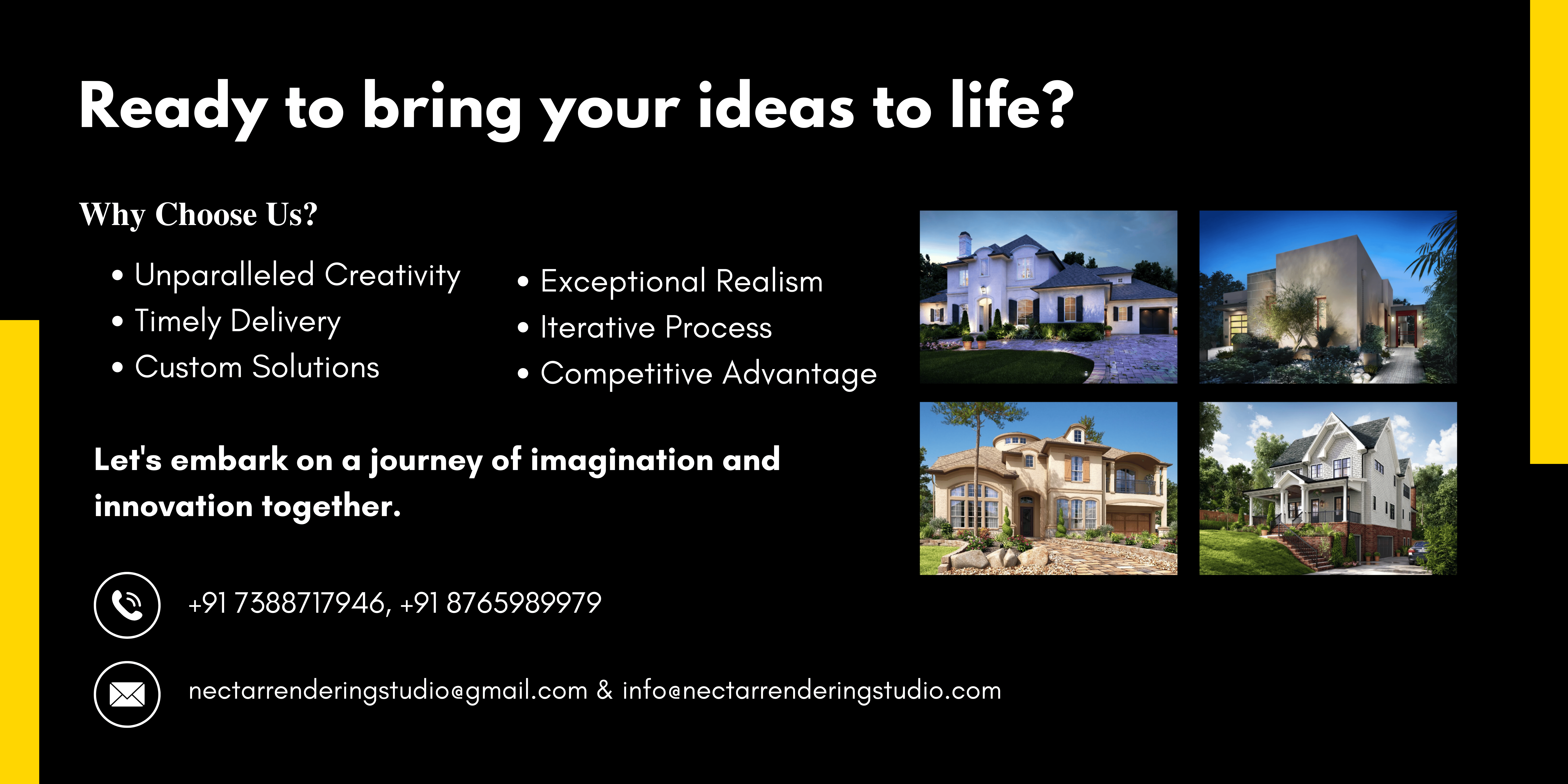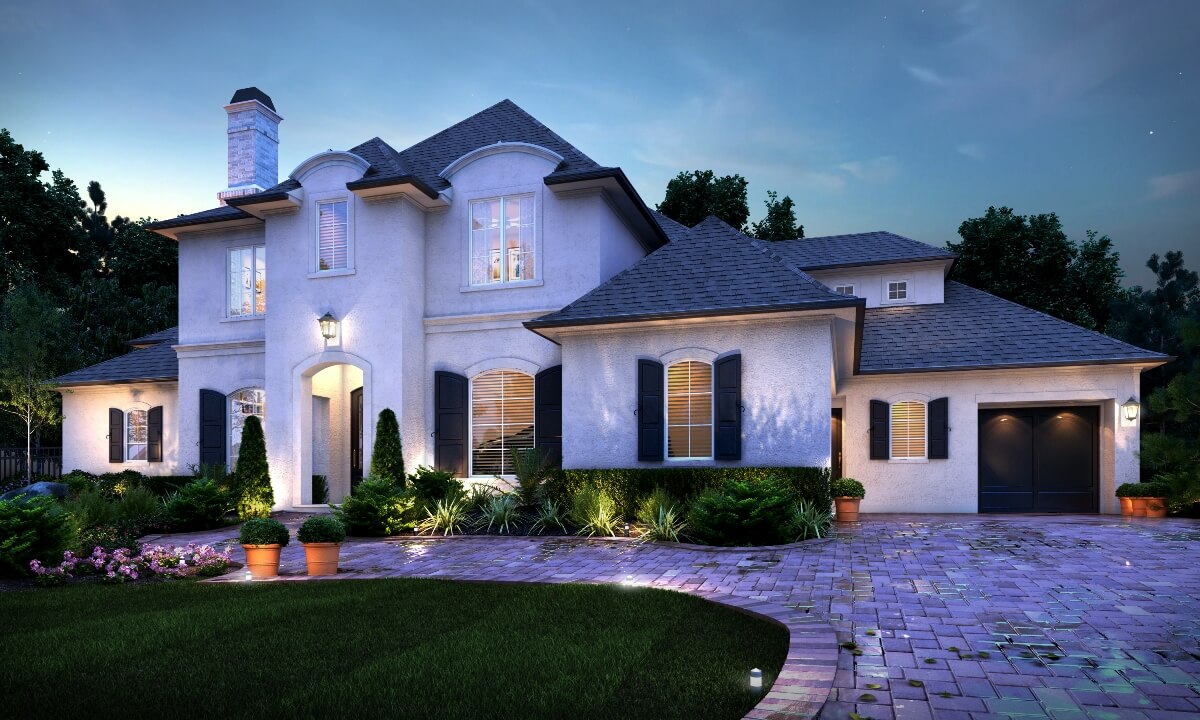3D exterior Visualization can help architects save some grueling hours of preparing scale models, laborious hand illustrations, recreating the context using physical models or any traditional media for architectural project presentations, and still achieving a more realistic context recreation and land up with incredible deals.
Architectural professionals can use CGI images and 3D renders to depict the designs in context, present incredibly photorealistic visuals of their concept to potential clients, making it more visually appealing and more accessible to put things into perspective for viewers. Now, let’s go through how 3D rendering can help the architect show buildings within context, make concept visuals captivating, and get approvals on significant projects.
Show the concept using exterior CGI in different settings
Many features condition the look of a building and therefore mold our perception of it, like weather, season, or even the time of the day. This is precisely what 3D exterior Visualization uses to an architect’s advantage; i.e., allowing the architect to demonstrate their concept in various backdrops, landscapes and, choose the best fitting surroundings and also present their client with an actual place to get an extensive idea of their potential housing rather than an abstract idea.
Further, the architect can opt for a time-lapse video using 3D animation presenting different weather, time of day, and season settings, all in one video, which can take the presentation a notch ahead and secure the architect a potential contract.
Featuring earth-shattering lighting effects
As everyone might comprehend, lightning plays a great deal in presenting any object, even more so when it is a building. Exhausting photography at all times of day from several angles is out of the table. Still, luckily architects don’t need a full-time paid photographer to present the future exteriors of a building in its best light, literally.
3D exterior Visualization allows for exploiting the power of lightning and its visual impacts on how a viewer perceives a building. The dazzling 3D visuals of appropriate lightning can showcase and highlight an architecture project’s key selling points. Professional artists can amplify 3D rendering to emphasize exterior features and call attention to the building’s atmosphere, making the concept even more appealing to the client.
Real 3D Exterior Visualization to incorporate various elements
Presenting architectural designs in photoreal computer-generated landscapes is a good alternative, but not the only one possible. 3D visualization studios boast assets required to recreate hyper-realistic context for a building, including fences, trees, cars, or even figures of people and pets that they can seamlessly add to CG visuals in Photoshop. This realistic exterior rendering helps make architectural visuals extremely photorealistic.
An architectural professional can choose specific elements to add a personalized touch to a concept presentation to make up a realistic context for design, thus helping viewers warm up to the project more efficiently.
Creating buildings using architectural CGI that match your neighbourhood
A new building cannot be considered independently from the neighborhood surrounding it, and a time machine is not the only option! This is where computer visualization comes in handy, and 3D exterior CGI makes sure to present the live outcome for prospective clients.
CGI specialists use 3D exterior Visualization with photo-matching to combine 3D models of building onto their surroundings and check their seamless compatibility with the existing environment based on style or proportions. This, in turn, eliminates the client’s guesswork and presents them with a more comprehensive understanding of the project that emphasizes the unusual beauty of a futuristic blueprint.
Tell your story clearly via exterior 3D visualization
When pitching a project, the architect is expected to present the entire concept of the design, which includes explaining technicalities and showing the aesthetics of the building and its surrounding area. It is impossible to accomplish this with schematic drawings and photography alone. Architectural CGI has varied benefits. When combined wisely, 3D rendering and photorealistic exterior visualization allow fabrication of an ambiance to tell a tale that helps a prospective client lay off last moment doubts and approve the proposed concept.
As portrayed above, architecture professionals can land up with terrific deals with CGI exploitation and a little help from specialized 3D rendering studios in 5 different ways and make their concept presentation more visually appealing without any extra time or effort. In such a way, CGI for exteriors can help the architects impress the viewers, approaching their emotions and negating their imagination by presenting them with a futuristic view, which is one of the cues to getting project approval.
____
At our 3D Rendering Studio, we bring ideas to life through stunning visualizations and animations. Our team of skilled artists and designers use the latest software and technologies to create high-quality 3D renders for a range of industries, including architecture, 3D Interior Rendering, Exterior Rendering, Product Rendering, and more.
From concept development to final delivery, we work closely with our clients to ensure that their vision is fully realized and beautifully presented. Whether you’re looking to showcase a new product or bring your architectural designs to life, we’re here to help you make an impact with stunning 3D visuals.
Check out our work portfolio here;
https://www.nectarrenderingstudio.com/portfolio.html
____
Searching for impeccable 3D rendering Company? Look no further! 🎯
We specialize in turning your visions into awe-inspiring visual masterpieces. Whether you’re an architect, interior designer, real estate professional, or a business owner seeking to showcase your products, our top-tier 3D rendering services are tailored to meet your unique needs.



